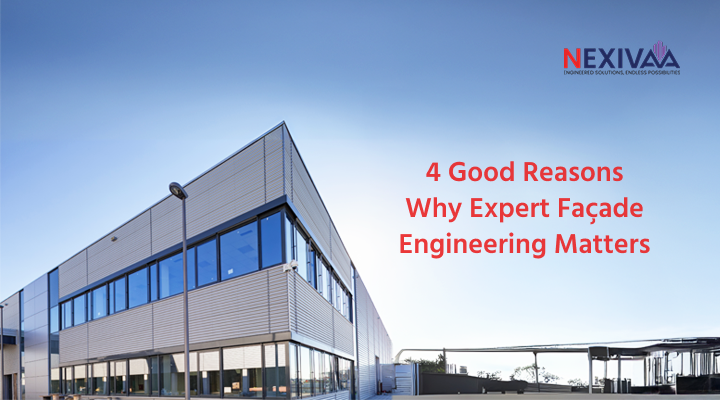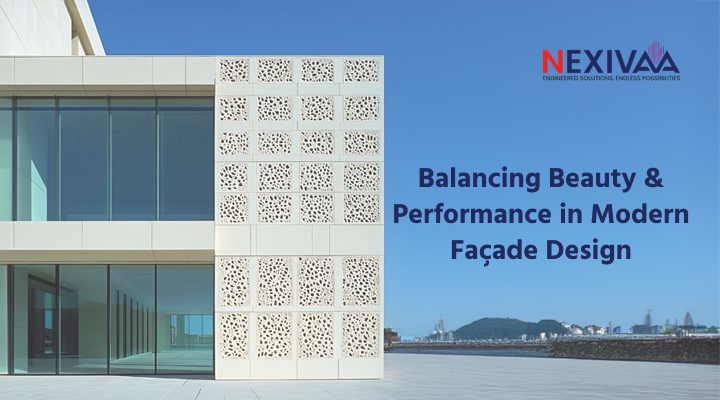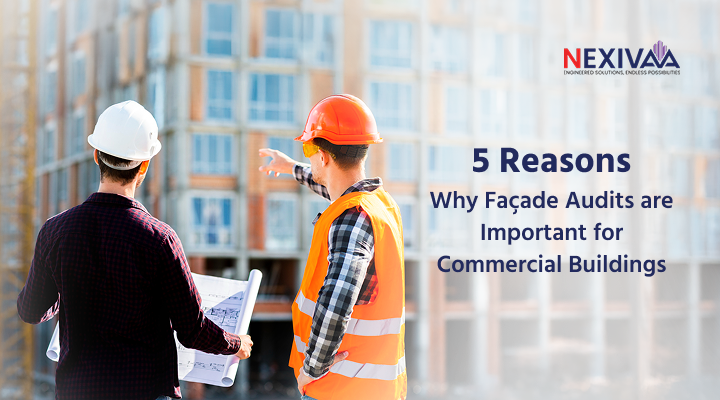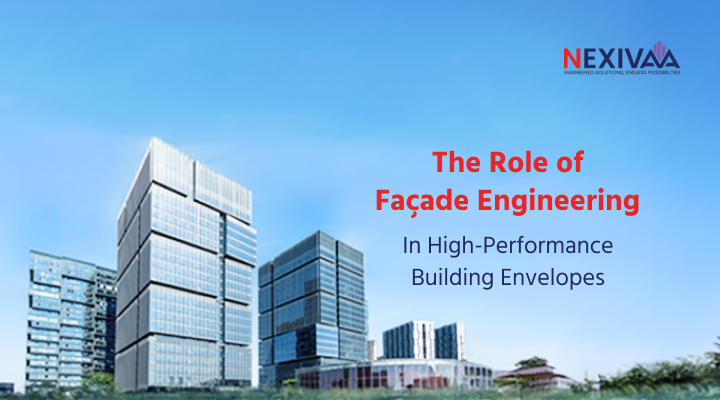The building envelope serves as the face of any structure, defining its character while protecting occupants from the elements. In today’s construction landscape, selecting the right façade company has become more critical than ever. As buildings grow taller and architectural designs become more ambitious, the complexity of façade systems has increased exponentially, making expert engineering and execution paramount to project success.
The Rising Complexity of Modern Building Envelopes
Modern façade design has evolved far beyond simple weather protection. Today’s façade systems must balance multiple performance criteria while meeting increasingly stringent building codes and sustainability requirements.
Key challenges in contemporary façade engineering include:
- Thermal Performance
Modern façades must achieve U-values as low as 0.15 W/m²K in some regions - Structural Loading
Wind loads on tall buildings can exceed 300 kg/m² in extreme conditions - Acoustic Requirement
Urban façades often need to reduce external noise by 40-50 dB - Fire Safety
Compliance with updated regulations following high-profile façade fires globally
Why Expert Façade Engineering Matters
A qualified façade architectural engineer brings specialized knowledge that general contractors simply cannot match. The Building Envelope Contractors Association reports that 68% of building performance issues stem from improper façade design or installation. This statistic underscores why working with specialists has become non-negotiable for successful projects.
Critical Areas Where Expertise Matters Most
1. Design Integration and Coordination
Modern commercial façade design requires seamless integration with multiple building systems. Expert façade companies understand how cladding systems interact with:
- Structural frames and movement joints
- MEP (Mechanical, Electrical, Plumbing) systems
- Waterproofing and drainage systems
- Interior fit-out requirements
2. Material Selection and Performance
The right façade company possesses deep knowledge of material properties and their long-term performance. They can advise on:
- Thermal expansion coefficients for different materials
- Chemical compatibility between components
- Maintenance requirements over a 25-50 year lifespan
- Cost-benefit analysis of various material options
3. Regulatory Compliance and Standards
Building codes vary significantly across regions. A specialized façade company ensures compliance with:
- Local building codes and zoning requirements
- International standards (ASTM, EN, ISO)
- Fire safety regulations
- Energy efficiency mandates
The Cost of Getting It Wrong
Choosing an inexperienced façade contractor can lead to catastrophic consequences. The International Building Performance Association estimates that façade failures cost the construction industry $3.2 billion annually in remediation works alone.
Common failures include:
- Water Infiltration: Affecting 45% of commercial buildings within the first 5 years
- Thermal Bridging: Increasing energy costs by up to 30%
- Premature Material Degradation: Requiring replacement 10-15 years early
- Structural Movement Issues: Leading to glass breakage and panel displacement
Key Qualities of Leading Façade Companies
When evaluating potential partners for your modern façade design project, consider these essential qualities:
Technical Capabilities
- In-house engineering teams with relevant certifications
- Advanced calculation software for thermal, structural, and acoustic analysis
- BIM capability for clash detection and coordination
- Testing facilities or partnerships for mockup verification
Project Experience
- Portfolio demonstrating similar project scales and complexities
- Experience with your preferred façade systems
- Track record in your geographical region
- References from architects and developers
Quality Assurance Processes
- ISO certifications for quality management
- Documented QA/QC procedures
- Material traceability systems
- Comprehensive warranty programs
Innovation and Sustainability
Leading façade companies invest in:
- Research and development of new systems
- Sustainable material alternatives
- Energy modeling capabilities
- Life cycle assessment tools
Making the Right Choice for Your Project
Selecting a façade company requires careful evaluation beyond just pricing. Consider these steps:
1. Define Your Requirements Clearly
To ensure project success, it is essential to define your requirements clearly from the outset. This includes specifying performance criteria such as thermal efficiency, acoustic comfort, and structural integrity.
The aesthetic goals and architectural intent must be articulated to guide design decisions and achieve the desired visual impact.
Budget constraints and value engineering needs should be carefully considered to balance cost-effectiveness with quality. Finally, outlining the timeline and phasing requirements will help coordinate project milestones and ensure timely delivery.
Together, these factors form a comprehensive foundation for effective planning and execution.
2. Evaluate Technical Proposals Thoroughly
When evaluating technical proposals, it is important to conduct a thorough review beyond just the cost estimates.
Request detailed methodologies to understand how the proposed solutions will be implemented. Compare these solutions against the established performance requirements to ensure they meet the necessary standards.
Assess the level of engineering detail provided to gauge the proposal’s depth and feasibility. Additionally, verify the assumptions made in calculations and the standards referenced to confirm accuracy and compliance with industry norms.
This comprehensive evaluation helps in selecting the most suitable and reliable proposal.
3. Check Credentials and References
To ensure reliability and quality, it is essential to check credentials and references carefully. This involves verifying engineering licenses and certifications to confirm qualifications.
Contacting previous clients provides valuable insights into their experiences and satisfaction levels. Whenever possible, visiting completed projects allows for first-hand evaluation of workmanship and outcomes.
Additionally, reviewing the firm’s litigation history and insurance coverage helps identify any potential risks or liabilities. This comprehensive vetting process supports confident decision-making.
4. Assess Long-term Support Capabilities
When assessing long-term support capabilities, it is important to consider several key factors. These include the availability of maintenance training and comprehensive documentation to ensure proper upkeep.
Additionally, spare parts availability must be evaluated to minimize downtime in case of repairs. Warranty terms and response times should be clearly defined to guarantee timely service when needed.
Finally, the availability of technical support after project completion is crucial for addressing any issues that may arise, ensuring sustained performance and reliability.
Partner with Nexivaa for Façade Excellence
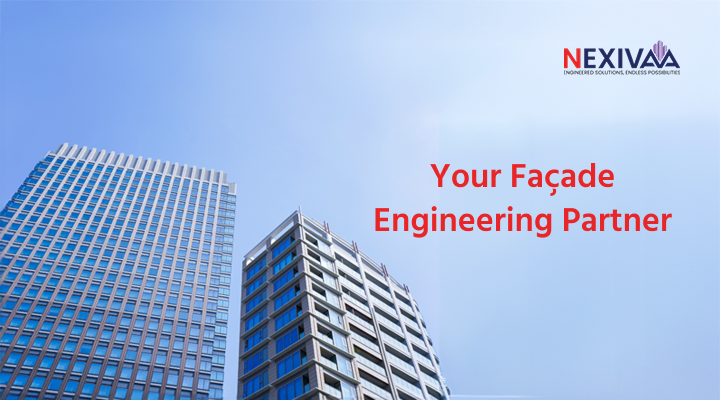
At Nexivaa, we understand that choosing the right façade partner can make or break your project. As leading façade architectural engineers, we bring comprehensive expertise in modern commercial façade design to every project we undertake. Our team of globally qualified engineers delivers precision-engineered solutions that balance aesthetic excellence with uncompromising performance.
From initial concept through final installation, we provide end-to-end façade engineering services backed by rigorous calculations, advanced modeling, and proven project delivery methods. Whether you’re developing a signature high-rise or optimizing an existing building’s envelope, our expertise ensures your façade performs flawlessly for decades to come.
As a dedicated façade consulting firm, Nexivaa stands apart for its ability to combine technical excellence with innovative design insights, giving clients solutions that are both visually striking and highly functional. Choosing Nexivaa means partnering with specialists who prioritize performance, sustainability, and long-term value in every project.
Ready to elevate your project with expert façade engineering? Contact us today for a comprehensive consultation and discover how the right façade partner transforms architectural vision into built reality.
FAQs
1. How does climate impact the choice of façade materials and systems for a building?
Climate influences façade design by dictating material selection and system performance requirements. For example, in hot climates, materials with high thermal resistance and solar reflectance are preferred to reduce cooling loads, while cold climates need façades with superior insulation to retain heat. Additionally, moisture and wind conditions determine waterproofing and structural demands.
2. What role does digital technology (e.g., BIM, 3D modeling) play in modern façade engineering?
Digital technologies like BIM and 3D modeling enable precise design coordination, clash detection, and visualization of façade systems with other building components. They improve accuracy in fabrication and installation, reduce errors, and facilitate collaboration among architects, engineers, and contractors.
3. How can façade companies help improve a building’s sustainability rating or green certification?
Expert façade companies contribute by selecting energy-efficient materials, optimizing thermal performance, and integrating renewable energy solutions. They ensure compliance with green building standards such as LEED or BREEAM, which enhances sustainability ratings through better insulation, reduced energy consumption, and the use of environmentally friendly products.
4. What are common pitfalls during façade installation that can affect long-term building performance?
Common challenges include improper sealing leading to water infiltration, misalignment causing structural stress, inadequate fastening risking panel detachment, and failure to follow manufacturer guidelines. Such issues can result in premature aging, energy inefficiency, and costly repairs.
5. What innovations are currently shaping the future of façade design and engineering?
Innovations include smart façades with dynamic shading and ventilation, integration of photovoltaic panels for energy generation, use of lightweight composite materials, and advanced simulation tools to optimize performance. These trends aim to enhance building aesthetics, comfort, and sustainability.
